Best PHP Array Traversal Techniques to Buy in December 2025
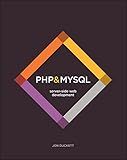
PHP & MySQL: Server-side Web Development



Front-End Back-End Development with HTML, CSS, JavaScript, jQuery, PHP, and MySQL


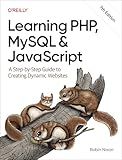
Learning PHP, MySQL & JavaScript: A Step-by-Step Guide to Creating Dynamic Websites



Programming PHP: Creating Dynamic Web Pages


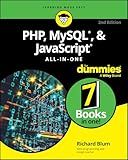
PHP, MySQL, & JavaScript All-In-One For Dummies



Start With AI Agents In PHP: The Market Opportunity Every PHP Developer Is Missing


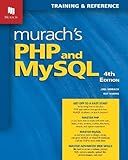
Murach's PHP and MySQL (4th Edition) Professional Web Development Guide for Learning PHP & MySQL Database Programming - Beginner-Friendly Coding Book with MVC Pattern & Security Features


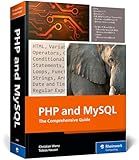
PHP and MySQL: The Comprehensive Guide to Server-Side Web Development with PHP 8 – Build Dynamic Websites with Database Integration, Security, and More (Rheinwerk Computing)


To loop through an array of objects in PHP, you can make use of the foreach loop. Check out the following code example:
// Assuming you have an array of objects $students = [ (object) ['name' => 'John', 'age' => 20], (object) ['name' => 'Jane', 'age' => 22], (object) ['name' => 'Mark', 'age' => 21] ];
// Loop through the array of objects foreach ($students as $student) { echo "Name: " . $student->name . ", Age: " . $student->age . "\n"; }
In the above example, we create an array called $students consisting of three objects. Each object represents a student and has properties like name and age. By using the foreach loop, we can iterate over each object in the array.
Inside the loop, we access the properties of the current object using the -> notation, i.e., $student->name and $student->age. You can perform any desired operations within the loop, such as displaying or manipulating the object's properties.
The output of the above code will be:
Name: John, Age: 20 Name: Jane, Age: 22 Name: Mark, Age: 21
By looping through an array of objects using foreach, you can easily access and work with the properties of each object without needing to manually keep track of the array index.
How do you merge the properties of multiple objects into one?
To merge the properties of multiple objects into one, you can follow these general steps:
- Create an empty object or choose an existing object to store the merged properties.
- Loop through each object you want to merge, either individually or using an array of objects.
- Iterate over the properties of each object using a for...in loop or Object.entries() method.
- Check if the current property already exists in the target object. If it exists, you can decide whether to overwrite it or skip it based on your requirements. If it doesn't exist, add the property to the target object.
- Repeat steps 3 and 4 for all objects you want to merge.
Here's an example in JavaScript:
// Example objects to be merged const obj1 = { name: 'John', age: 25 }; const obj2 = { occupation: 'Engineer', hobby: 'Gardening' }; const obj3 = { city: 'New York', age: 30 };
// Merging the properties into a single object const mergedObject = {};
// Loop through each object and merge properties const objectsToMerge = [obj1, obj2, obj3]; objectsToMerge.forEach(obj => { for (let prop in obj) { if (obj.hasOwnProperty(prop)) { mergedObject[prop] = obj[prop]; } } });
console.log(mergedObject); // Output: { name: 'John', age: 30, occupation: 'Engineer', hobby: 'Gardening', city: 'New York' }
In the example, we create an empty mergedObject to store the merged properties. We then loop through each object (in this case, using forEach) and iterate over their properties using a for...in loop. We check if each property exists in the mergedObject and add it if it doesn't exist or overwrite it if it does.
After merging, mergedObject contains all the properties from obj1, obj2, and obj3.
How do you find the maximum or minimum value of a property in an array of objects?
To find the maximum or minimum value of a specific property in an array of objects, you can follow these steps:
- Declare a variable to store the maximum or minimum value.
- Iterate over the array of objects using a loop, such as a for loop or forEach loop.
- During each iteration, access the property value of the current object.
- Compare the current property value with the stored maximum/minimum value. If the current value is greater than the stored maximum, update the maximum value. If the current value is smaller than the stored minimum, update the minimum value.
- After the loop finishes, the stored maximum/minimum value will be the result.
Here's an example in JavaScript to illustrate the process of finding the minimum value of a property called "price" in an array of objects:
// Sample array of objects const products = [ { name: 'Product A', price: 10 }, { name: 'Product B', price: 20 }, { name: 'Product C', price: 15 }, ];
// Variable to store the minimum price let minPrice = Infinity;
// Iterate over the array and update the minimum price products.forEach((product) => { if (product.price < minPrice) { minPrice = product.price; } });
// Result console.log(minPrice); // Output: 10
In this example, the minPrice variable starts with the value Infinity to ensure that the comparison will always find a smaller value during the first iteration. The forEach loop iterates over each object in the products array, and within each iteration, the price property of the current object is compared with the current minimum price. If a smaller price is found, the minimum is updated. Finally, the minimum price is outputted as the result.
Can you loop through an array of objects using a for loop?
Yes, you can loop through an array of objects using a for loop in many programming languages. Here is an example in JavaScript:
const myArray = [ { name: "John", age: 25 }, { name: "Jane", age: 30 }, { name: "Mike", age: 35 } ];
for (let i = 0; i < myArray.length; i++) { console.log(myArray[i].name); console.log(myArray[i].age); }
In this example, the for loop iterates over each object in the myArray and accesses their properties (name and age) using dot notation.
How do you compare two arrays of objects for differences?
To compare two arrays of objects for differences, you can follow these steps:
- Determine the length of both arrays. If they are not equal, then the arrays are different.
- Sort both arrays based on a unique identifier or a key property to ensure consistent ordering for comparison.
- Iterate through each object in both arrays simultaneously.
- Compare the properties of each object in the arrays. You can use a loop or a built-in method like forEach to iterate through the objects. If the properties of an object in one array differ from the corresponding object in the other array, then there is a difference. You can compare the properties using a conditional statement such as an if-statement, or by using a library like Lodash which provides convenient methods for deep comparison (isEqual or isEqualWith).
- Keep track of the differences by storing them in a separate array or object.
- Finally, check if the array of differences is empty. If it is, then the two arrays are identical. If not, the arrays contain differences.
Here's a JavaScript example that demonstrates the comparison of two arrays of objects:
function compareArrays(arr1, arr2) { if (arr1.length !== arr2.length) { return false; }
const sortedArr1 = arr1.sort((a, b) => a.id - b.id); const sortedArr2 = arr2.sort((a, b) => a.id - b.id);
const differences = [];
sortedArr1.forEach((obj1, index) => { const obj2 = sortedArr2[index]; if (!_.isEqual(obj1, obj2)) { differences.push({ obj1, obj2 }); } });
return differences; }
const arr1 = [{ id: 1, name: 'Alice' }, { id: 2, name: 'Bob' }]; const arr2 = [{ id: 1, name: 'Alice' }, { id: 2, name: 'Charlie' }]; const arr3 = [{ id: 1, name: 'Alice' }, { id: 2, name: 'Bob' }];
console.log(compareArrays(arr1, arr2)); // Output: [ { obj1: { id: 2, name: 'Bob' }, obj2: { id: 2, name: 'Charlie' } } ] console.log(compareArrays(arr1, arr3)); // Output: []
Make sure to adapt the comparison logic to your specific requirements, such as comparing specific properties or using different programming languages.
How do you loop through an array of objects using a foreach loop?
To loop through an array of objects using a foreach loop, you can follow these steps:
- Declare an array of objects. const myArray = [ { name: 'Alice', age: 25 }, { name: 'Bob', age: 30 }, { name: 'Charlie', age: 35 } ];
- Use the forEach() method to loop through the array. Pass a callback function as an argument to forEach(), which will be executed for each element in the array. myArray.forEach(function(element) { // Code to be executed for each element });
- Inside the callback function, you can access each object in the array by using the element parameter. You can then access the properties of each object using dot notation or square bracket notation. myArray.forEach(function(element) { console.log(element.name); // Accessing the 'name' property of each object console.log(element.age); // Accessing the 'age' property of each object });
The forEach loop will iterate over each object in the array, executing the callback function for each element.
